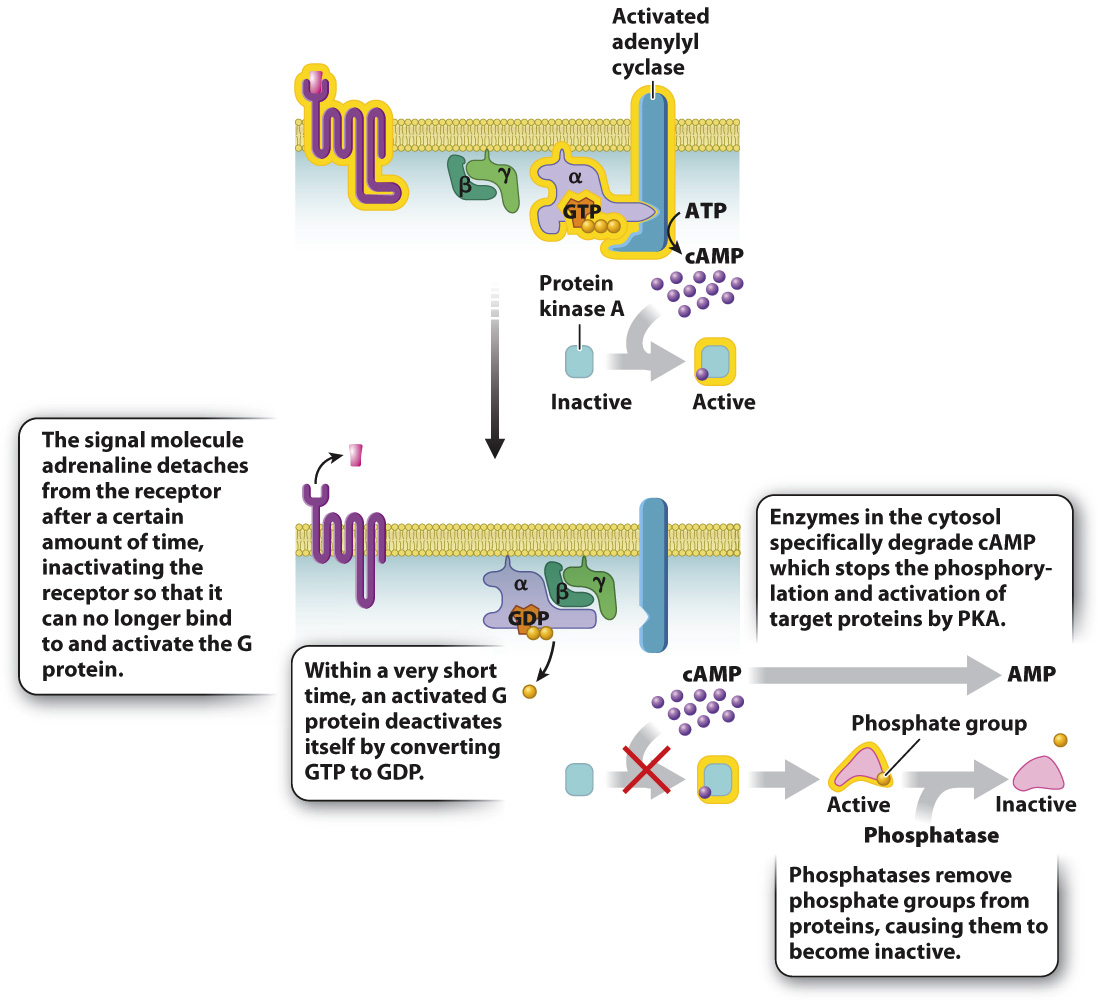Signaling pathways are eventually terminated.
After a good scare, we eventually calm down and our heartbeat returns to normal. This change means that the signaling pathway initiated by adrenaline has been terminated. How does this happen? First, most ligands, including adrenaline, do not bind to their receptors permanently. The length of time a signaling molecule remains bound to its receptor depends on how tightly the receptor holds on to it, a property called binding affinity. Once adrenaline leaves the receptor, the receptor reverts to its inactive conformation and no longer activates G proteins (Fig. 9.12).

Even when a receptor is turned off, a signal will continue to be transmitted unless the other components of the signaling pathway are also inactivated. A second place where the signal is terminated is at the G protein itself (Fig. 9.12). G proteins can catalyze the hydrolysis of GTP to GDP and inorganic phosphate. This means that an active, GTP-
191
Farther down the pathway, an enzyme converts the second messenger cAMP to AMP, which no longer activates protein kinase A. Phosphatases remove the phosphate groups added by PKA, inactivating PKA’s target proteins (Fig. 9.12). In fact, most signaling pathways are counteracted at one or more points as a means of decreasing or terminating the response of the cell to the signal.
Quick Check 3 Name four ways in which the adrenaline signal to the heart is terminated.
Quick Check 3 Answer
The signal to increase heart rate carried by adrenaline can be reversed in at least four ways: (1) by decreasing the amounts of the signaling molecule available to bind and activate the G protein-